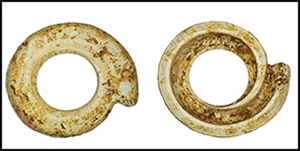Article contents
Mortuary practices of the first Polynesians: formative ethnogenesis in the Kingdom of Tonga
Published online by Cambridge University Press: 02 July 2020
Abstract

Ancestral Polynesian Society has been argued to represent a formative stage in Polynesian ethnogenesis. Recently discovered human burials at the Talasiu midden site in Tonga, dating to c. 2650 cal BP, now provide the earliest known evidence for Ancestral Polynesian mortuary behaviour. This article presents and evaluates the burials, comparing archaeological evidence for Talasiu mortuary practices with those of older Lapita and more recent Tongan burials, as well as with Ancestral Polynesian Society funerary activities inferred through linguistic reconstruction. These comparisons emphasise that several socio-cultural behaviours that are important to contemporary Polynesian societies were expressed very differently in the past.
- Type
- Research Article
- Information
- Copyright
- Copyright © Antiquity Publications Ltd, 2020
References
- 8
- Cited by




